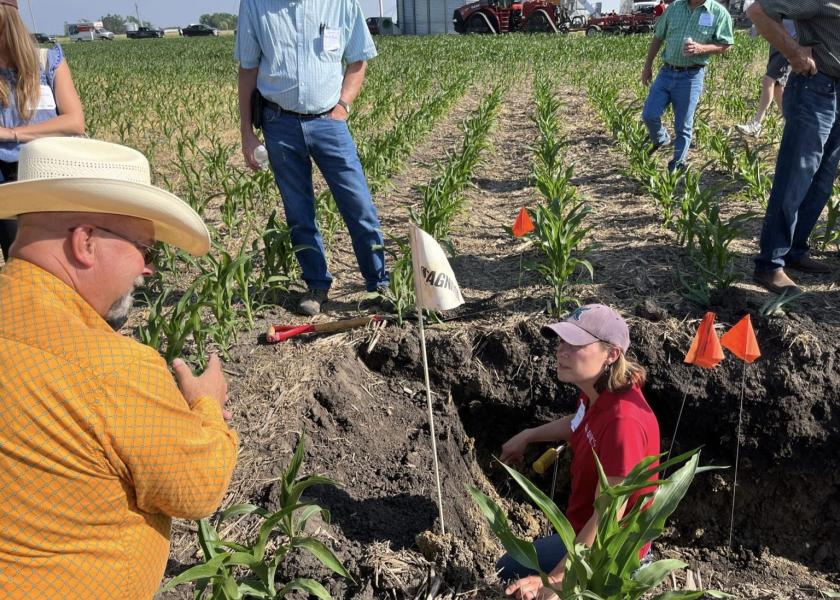Drought Mitigation Strategies For Operational Resilience

Throughout the Midwest drought conditions are putting strain on yield potential early this year. From stories of rootless corn on the Western plains to stands in the Eastern plains that are slow to take or emerging unevenly, widespread concern is driving commodity prices up in anticipation of a down year. And it doesn’t look like there’s much relief in sight.
But some stands are thriving. The difference is locking in subsoil moisture using a slate of practices that include continuous covers and no-till planting, for starters.
I just represented America’s Conservation Ag Movement at the TopSoil Summit near Riverside, Iowa, and while the eastern part of the state hasn’t had the prolonged drought as they’re seeing in the western half, there is still considerable dryness, and it’s on everyone’s mind.
Continuum Ag Regenerative System
The conference was hosted by 7th-generation farmer Mitchell Hora, founder and CEO of Continuum Ag, and his father, Brian, who has been no-tilling since 1978 and using cover crops since 2013. What we saw in the soil pit on their farm should be confirmation for farmers: Once we dug about 3 to 4 inches, we found wet, dark soil, and corn roots reached down 2-3 feet. That kind of performance is the result of years of incremental changes that built a regenerative system that preserves the soil’s natural microbiology and activity. The proof of how it works is in the numbers.
Mitchell Hora, founder and CEO of Continuum Ag, uses regenerative soil health practices on Hora Farm to achieve consistent yields.
Data from Hora’s farm show that the yields on his farm are higher than the county averages, but more importantly, they fluctuate very little compared to average county fluctuations. The regenerative practices he’s built into his operation have made his soil less susceptible to weather extremes and provided more resilience to wind, rain, drought and pest pressures.
The ability to hold and store water has never been more important for the American producer as weather becomes more unpredictable and severe. And as plants stress under the extremes, they’ll be more prone to disease and insect pests. Healthy plants keep input costs low on Hora’s farm and others that invest in healthy soils.
It’s not too late to start building resilience into operations. It starts with a plan. This year’s TopSoil Summit focused on how producers can monetize soil health in a data-connected supply chain. As demand for sustainable produce grows, farmers who are out front with their practices will reap the biggest rewards, and there’s money to be made beyond bigger and more stable yields.
About the Author: Jimmy Emmons leads Trust In Food’s Partnerships for Climate-Smart Commodities Connected Ag Project, America’s Conservation Ag Movement and Trust In Beef, coalition-driven conservation programs developed to accelerate the adoption of conservation agriculture at scale.
Planting Green Drives Bold Changes for Indiana Farmers Focused on Soil Health and Conservation
Five Reasons Why I Started Using Conservation Practices On My Farm
Pollinator Habitat Fits Farmer’s Sandy Soils And Delivers A ROI







